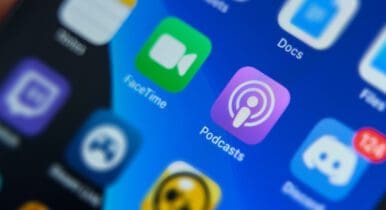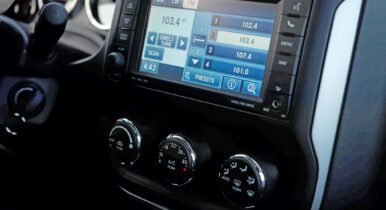4 Reasons to Keep Radio in Your Advertising Arsenal

The line between candidate and media personality is blurring and nowhere is this phenomenon more apparent than in audio. A great example is Vivek Ramaswamy, who in April launched a podcast to compliment his presidential campaign. He’s since released 56 episodes of “The Vivek Show,” and he plans to continue broadcasting even if he drops out of the race.
While Ramaswamy has invested heavily in setting up his own studio, candidates interested in getting their message out this way don’t need to follow that lead. In fact, many radio stations sell paid programming blocks and you should explore buying the time for your candidate.
It’s a lot like making a spot buy, only you request rates for 30- or 60- minute slots on stations whose programming is consistent with the voters you’re working to reach. Now you’re talking.
Fish Where The Fish Are
A word about radio. No, it isn’t dead. And it especially isn’t dead for registered voters. A recent Share of Ear study, conducted by Edison Research, showed a whopping 71 percent of registered voters spent their time listening to radio (versus 16 percent to podcasts and under 5 percent to the likes of Pandora and Spotify). It’s worth noting that while 77 percent of Republicans and 72 percent of Independents spent their audio time with radio, even 66 percent of Democrats favored AM/FM radio over other audio options.
I managed KABC Radio in Los Angeles through three election cycles where we offered paid-political programming. KABC is a traditional talk station with a mix of local and national shows, and we also accepted paid programming in non-prime hours, so it was a natural avenue to marry paid political shows with our very targeted, very voter-focused audience that tuned in for national shows.
It’s Your Show
A station is unlikely to give your candidate a radio show of their own, but when you buy the time, it’s your candidate’s show. You’ll choose the topics and guests and how they’re presented. You might choose to feature donors, shine the light of appreciation on volunteers, or endorse candidates in other races.
This unique political ad approach gives candidates a custom platform, access to engaged and likely voters, and a unique, personal megaphone. The earlier in the campaign cycle they debut their show, the greater the bond with voters and the less advertising clutter they have to compete with. And it’s a commissionable campaign ad expenditure.
Candidates and Issues Benefit
An audio platform not only works for candidates, but also for issue advocacy. The Recall Gavin Newsom campaign hosted a weekly show called “Friday Nights at the French Laundry” on KABC for nearly a year, which the founders acknowledge helped drive their successful signature-gathering effort. As candidates for Congress in California, incumbent Rep. Maxine Waters and her 2020 opponent Joe Collins both hosted radio shows on KABC.
A podcast-to-broadcast project with the Howard Jarvis Taxpayers Association, the stalwart defenders of California’s landmark Proposition 13 anti-property tax measure, has been part of an ongoing relationship with KABC for nearly three years. The approach that we initiated at my former station is applicable in every media market and is a really cost-effective, high-profile, outside-the-box tactic.
Podcast To Broadcast
If you’re unsure of how to manage the logistics of this process, get started as a podcast, develop the tone, the messaging, the “voice,” then contact a local station and request to buy time to broadcast the podcast—what we dubbed the “Podcast to Broadcast” model, buying a 30- or 60-minute time slot to air the podcast.
And while it’s exciting and energizing to do the show from the station’s studios, Zoom has made remote production simple and high quality. As part of your time buy, ask the station to ensure the show is streamed, to create a page on their website and to post a podcast version of the show on that page. Make sure you get a link to the podcast to post on the candidate’s website and to use on social media.
There’s a sign posted in the marketing area of my old station that advised: “Be known before you’re needed.” That message really underscores the benefit of ongoing branding and connecting with the audience on a consistent basis. That maxim also applies to political campaigns—the more time before Election Day, the more time there is to touch the voters and let them know why they need your candidate. Launching a podcast, a podcast to broadcast, or a radio program is an innovative, proven method to reach, connect and capture voters.
Drew Hayes was most recently VP/Market Manager and Program Director of KABC Radio in Los Angeles and has also programmed and managed News, Talk and Sports stations in Chicago, Dallas and Tampa, as well as the ESPN Radio Network in much-maligned Bristol, Connecticut.



